There’s a lot of misinformation about our native palm, the Sabal palmetto. It’s not protected, its heart does not taste like cabbage, and it is doubtful the fruit were ground up by natives to make bread.
The tree is indeed the state of Florida tree but it not protected as said. As for the heart of palm, it has a flavor and texture more in line with artichokes. The heart is difficult to extract from the tree even with metal tools. It is not a calorie positive source of food in that it takes more energy to get the heart of palm than the heart of palm provides. (This and time is one reason why an electric chain saw oiled with olive oil is a handy tool to have when harvesting heart of palm.) Then there’s the fruit…
The small date-flavored fruit has a large seed (and very little pulp.) More to the point the seed is extremely hard, and Florida does not have any rocks worthy of grinding those hard seeds into meal or flour for cooking. To say the natives made bread out of them is to leave out how they did it. While technologies change ancient folks were not less clever than we and also appreciated efficiency. I think the natives ate the pulp off the seed then sprouted the seeds before drying them then making the resulting meal into bread, kind of like sprouted wheat bread today. To read more about the palm go here.
Sow thistles are up for the season. I even saw one blossoming this weekend during a class in Port Charlotte. While a spring and summer plant up north here it favors the mild winter. The particular species I saw was Sonchus asper but there you find it Sonchus oleraeus is sure to follow. The latter is less rank and more pleasant to eat than S. asper, which is also called the Spiny Sow Thistle. They can be eaten raw but are slightly on the bitter side. Boiling them a few minutes renders them tender and mild. To read more about the sow thistles go here.
I am often invited to see someone’s vegetable garden, and it’s usually growing well. Then I’m asked if I see any edible weeds, and usually there are some. I point them out. Then I hear something like, “oh, is that what it is?” There is professed interest but few gardeners ever eat any of their edible weeds. They are intentionally growing certain plants. Interlopers are not welcome even when edible: A baby sow thistle in a vinaigrette is not on their menu.
At first that would seem strange, after all a vegetable garden is all about food, fresh and nutritious. But on reflection perhaps a gardener’s reluctance to eat weeds is understandable. Weeds don’t need gardeners whereas cultivated crops are almost entirely dependent upon gardeners. Weeds are independent adults who go their own way, crops need protection like children and die off without constant supervision and intervention.
That may be stretching psychology a little, but once something is labeled a weed, or more so a noxious weed that threatens agriculture, it ceases to be a positive plant. It becomes a drain on resources such as space, water, sunshine, fertilizer and time. The edible wild sow thistle we welcomed a century ago into our garden is now chemically killed. Or looked at it another way: The sow thistle wasn’t as clever as spinach. We believe we choose which crops to cultivate. Perhaps in the grander scheme the crops choose us. Lawn grass certainly knows a patsy when it sees it. Let’s make an analogy between plants and canines.
In the United States there are some 75 million dogs, and only about 15,000 wolves. The dogs are clearly giving people something people want and the wolves are not. We recognize wolves as the superior canine but it is dogs we raise. One in three of us “own” at least one dog. Weeds are the superior plant, but we raise crops. As dogs have outwitted wolves, crops have outwitted weeds. Cultivated crops seduced man with taste, texture and energy. Weeds offered more nutrition but don’t like to obey. They lost. There is one more aspect, ease of cultivation. Like the dog who figured out — “if I act friendly they’ll feed me” — some crops have figured out if they give up some independence man will do all the work of taking care of them.
Weeds fight a constant battle with their pest, and as a consequence succeed or die off. They are strong. Crops are totally depend upon man to fight off pests. They are weak. Like dogs and wolves there are 11 million acres of potatoes planted every year but not one acre of cattails though it produces more starch per acre than potatoes. The potato is clearly playing the game of popularity better than the cattail. The question is who or what is controlling whom and are there consequences?
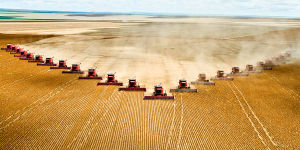 The problem is man’s seduction by crops, also know as agriculture. Like run-off nutrients into a lake cultivated crops have produced a bloom in the human population. We are under cultivation by crops and now nearly seven billion of us on a planet that would support without crops only one million. Like an algae bloom that kills off the environment of a lake our shear number is killing off the earthly environment. Paying attention to crops is a major portion of all human activity. It is the fabric of civilization itself. We like to think we are the cultivated crops’ masters but it just might be the other way around. We are doing what they want, which is taking care of them. More importantly will or can crops protect us when a human pest comes around that threatens us en masse like ebola, or AIDS? Often a disease cure is found in a chemical factory called a wild plant.
The problem is man’s seduction by crops, also know as agriculture. Like run-off nutrients into a lake cultivated crops have produced a bloom in the human population. We are under cultivation by crops and now nearly seven billion of us on a planet that would support without crops only one million. Like an algae bloom that kills off the environment of a lake our shear number is killing off the earthly environment. Paying attention to crops is a major portion of all human activity. It is the fabric of civilization itself. We like to think we are the cultivated crops’ masters but it just might be the other way around. We are doing what they want, which is taking care of them. More importantly will or can crops protect us when a human pest comes around that threatens us en masse like ebola, or AIDS? Often a disease cure is found in a chemical factory called a wild plant.
Animals and plants that gain and benefit from our favor cannot survive without us. If humanity dies off cultivated crops and dogs will disappear. But, there will still be weeds and wolves. Perhaps humans need to be a bit more resilient, like weeds and wolves.
Upcoming classes: Saturday, January 3rd, Mead Garden: 1500 S. Denning Dr., Winter Park, FL 32789. 9 a.m.; Sunday, January 4th, John Chestnut State Park: 2200 East Lake Road, Palm Harbor, FL 34685, 9 a.m.; Saturday, January 10th, Wickham Park: 2500 Parkway Drive, Melbourne, FL 32935-2335, 9 a.m.; Sunday, January 11th, Dreher Park, 1200 Southern Blvd., West Palm Beach, 33405, 9 a.m.; Saturday, January 24th, Red Bug Slough Preserve, 5200 Beneva Road, Sarasota, FL, 34233, 9 a.m.; Sunday, January 25th, Bayshore Live Oak Park, 23000 Bayshore Rd., Port Charlotte, FL 33980, 9 a.m., meet at the parking lot at the intersection of Bayshore Road and Ganyard Street. For more information about classes click here.
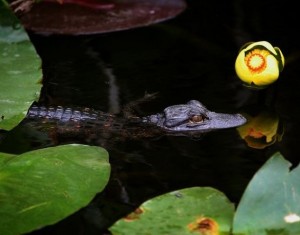
Eat The Weeds On DVD. My foraging videos do not include alligators but they do cover dozens of edible plants in North America. The set has nine DVD. Each DVD has 15 videos for 135 in all. Some of these videos are of better quality than my free ones on the Internet. They are the same videos but many people like to have their own copy. I burn and compile the sets myself so if you have any issues I handle it. There are no middle foragers. And I’m working on adding a tenth DVD. To learn more about the DVDs or to order them click here.

On the Green Deane Forum we post messages and pictures about foraging all year-long. There’s also a UFO page, for Unidentified Flowering Objects so plants can be identified. Recent topics include: Squash? Hawthorn Catsup, Your Traditional Thanksgiving, Paw Paw Seeds, Flint Knapping, Dried Persimmons, Tell You Love Them, Indian Pipes, Amaranth, Mushrooms: Winter Is Here Six Weeks Early, Chicken of the Woods, Coco Plums? Bush has THorns, Acorns All Colors And Sizes, Turn On The Water, Nanoscopy, Puff on This, Lab To Determine Plant Composition, Orange Red Berry, Atlatl, Odd Trees, Grinder for Tough Roots, European Mountain Ash Edible? Curly Dock, and Goldenrod of Some Sort. The link to join is on the right hand side of this page.

Now is the time too to think about going to the Florida Herbal Conference in late February, organized by Emily Ruff. I’ve taught edible plants there for the last three years and will be there again this year. In fact I plan to spend a lot of time there. It’s a must for all southern herbalists and well as those northern ones who want to escape the cold and study their craft in the dead of winter. It always has interesting speakers and great classes. For more information and to register go here.
If you would like to donate to Eat The Weeds please click here

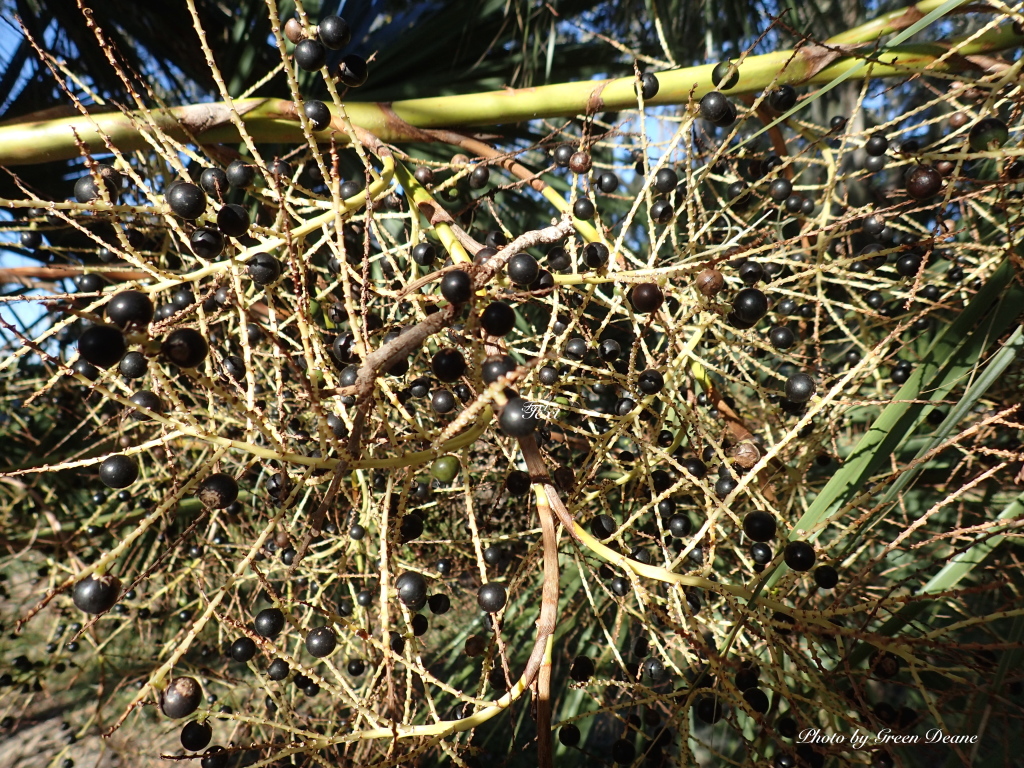
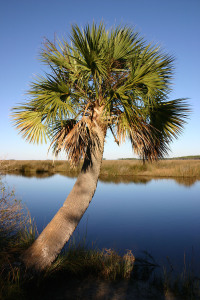
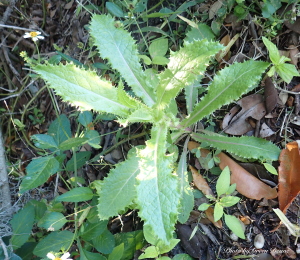
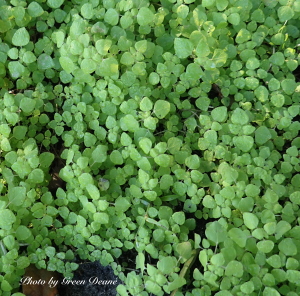

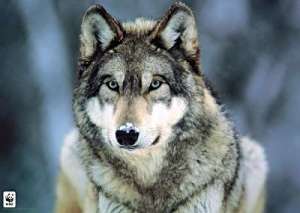
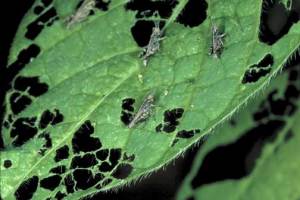

Your comments about garden plants vs “weeds” brought up an intriguing idea that I’m sure someone has thought of before me. Do you know of anyone who is cultivating or devoting space to edible weed gardens? Not just Florida Friendly yards of natives but actually fostering wild edibles.
Nice essay on weeds vs. cultivated plants. Some of my best “foraging” was gathering and eating the weeds that out-competed the vegetables in my garden.
Very insightful commentary this week. Good analogies. Thanks.
Well said, Deane. I just heard a report from the World Wildlife Foundation that suggests that we are killing ourselves off by consuming too many fish, killing off too many animals etc. etc. etc. How about following up with eating insects as an alternative to meats?
I have several articles on that.
Thanks for your comment on using olive oil to lubricate your electric chainsaw. I received one as a gift and haven’t felt positive about using the petroleum oil.
You mentioned a while back about offering classes in the Pensacola area. Hope you’ll come this way soon.
I love your weeds versus crops analogy. Superb! Will you marry me?
I think I’m free this weekend…
So that’s what I found growing around my sweet potato pots! (Pellitory) I intend to try it at least once- once I knew for sure some of my weeds were purslane I incorporated them into family eats.
Personally I’ve benefitted from a relative of Cabbage palmetto, namely Saw palmetto supplement, which improved some urinary troubles I used to complain of. I can remember in my childhood we used to collect parts of a young Cabbage palmetto plant such as the leaf boot which my mother, like other Sudanese ladies used as a simple tool locally called “Gurgureeba” for spreading the viscous aquous fermented sorgum floor to prepare thin layers during baking of our local bread called “Kisra”. At present many people prefer “Kisra” to wheat bread in their meals. The fibers gained from the young plant are used as strainers inserted at the outlet of the famous Sudanese “Jubuna” – a – beautiful burnt clay pot specially structured for preparing “instant coffee” out of freshly ground roasted coffee beans.
In my garden, like many of my neighbours, I keep among other ornamentals a young growing Cabbage palmetto. Worth mentioning, during my visit nowadays to Doha – Qatar – I pass through rows of Cabbage palmettos decorating streets eg. University Street. These plants like others are well catered for by the authorities. I may refer to this in another comment if you won’t mind.
I think Kisra is made from what we call Crowfoot Grass, which is an African native.
Thank you dear Green for the new info. I thought “Kisra” is restricted to the Sudanese traditional bread constituted mainly from sorgum or millet floor particularly from domesticated species.. I’ve now known that this name includes even names of social societies like one in Charleston. In Africa the Crow Foot grass, very familiar to me, as animal fodder since my childhood in Kassala (eastern Sudan). However it is reported as famine food in Africa ,well suitable to collect enough of its sand grain-size fruits for the preparation of a nutritious nibbling.
I like very much the analogy between plants and canines. I wonder if it will also be applied to other systems. According to the internet, within animals, some people claim goats are the best – may be cats and dogs are paid equal attention by man. It has all to do with the intervention of homo sapiens with Nature. One would also think of the role of the advancing technology in contributing to this situation. At the end, one may wonder if it is all to do with “ struggle for existence” !
Back to the Cabbage Palmettos of Doha – Qatar, it is known that these plants can tolerate extreme fluctuations in pH, salinity and soil density. With respect to the element calcium, here, it occurs in abundance by virtue of proximity to the sea. The visitor to Doha won’t miss other beautiful streets and roads eg. “ Environment Road “ – trees on both pavements and big roundabouts with flowers, pigeons wild and tamed and various little birds all happy to gain food – so named to encourage people to cater for nature and the environment. Lucky enough, I’ve not missed “ The International Flowers & Garden Exhibition – 20th/22nd Nov. 2014 “ held under the slogan “ Back To Nature “ and bearing in mind what HH Sheika Mosa Bint Nassser induced people to be responsible and respectful towards nature for the benefit of mankind : “If we nurture our environment, it will nurture us, “
Besides the main show including some children performances and songs and a number of lectures all in favour of going back to nature, I was more impressed by the corner of landscape architect Malik of “ Tendances Green “ which makes you feel relaxed and happy enjoying Nature and the good Environment all around even on the walls inside your room.